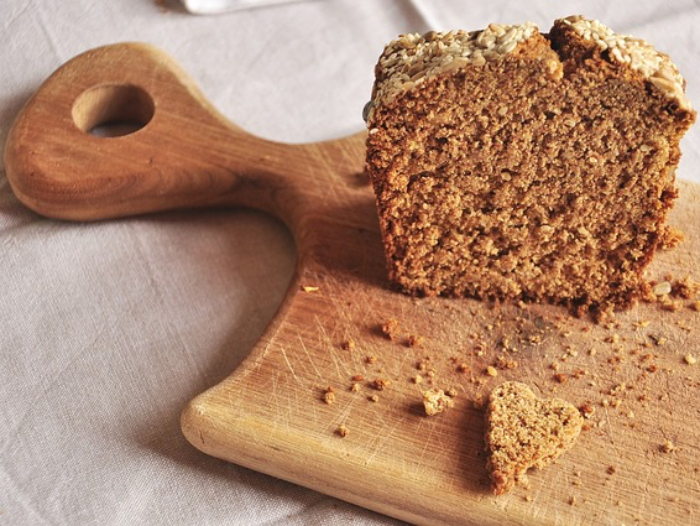
Some breads, pretzels, and other baked goods are made with sprouted grains, a fact that is usually highlighted on the package. Some consumers think that if a product contains sprouted grains, it will not contain any flour. That is not the case, but first let's look at what happens when you sprout grains. You will need a whole grain, meaning the grain contains a germ, endosperm, and bran.
Whole grains have everything needed to make a new plant because grains are the seeds of cereal grasses. With the right temperature and moisture, the germ of the whole grain sprouts into a new plant while the starchy endosperm provides food for the sprout and the bran provides protection and additional nutrients. Once the grain has sprouted, the sprouts are handled in one of two ways.
1. The sprouted grains are dried and then milled into sprouted grain flour.
2. The sprouted grains, while still wet, are mashed together, sometimes with other sprouted grains and/or sprouted legumes, and then baked to make breads and other baked goods. These products are often called "flourless." (Yes, they are flourless, but they still contain gluten if made with wheat, barley, or rye.)
If you want to buy a flourless sprouted grain product, look carefully at the ingredient list to avoid sprouted grain flours. Whether you pick flourless or floured breads, you will certainly notice more complex flavors, and the flourless breads also have a lot more texture.
From a nutritional point of view, sprouted grain breads are (of course) more nutritious than white bread, and are generally similar to 100% whole grain breads. When sprouting starts, enzymes are activated that result in slightly higher levels of some vitamins and minerals, but the difference is not terribly significant.
Some sprouted grain breads may be a little higher in protein and/or fiber than 100% whole wheat breads, so look at the nutrition label. Whereas one slice of 100% whole wheat bread contains 3 grams of protein and 2 grams of fiber, Ezekiel Sprouted 100% Whole Grain Bread has 4 grams of protein and 3 grams of fiber. The bottom line is that the actual nutrient composition of a bread will vary depending on the specific ingredients. Because Ezekiel's Sprouted 100% Whole Grain Bread (a flourless product) includes sprouted lentils and soybeans (good protein and fiber sources) along with organic sprouted wheat and other grains, it is no surprise that it is a little higher in protein and fiber.
Although you will find many health claims on sprouted grain packaging, there is not much research on the health benefits of sprouted grains. One promising area of research is that sprouted grain breads appear to steady your blood glucose levels better when compared to other breads. In any case, sprouted grains are all whole grains, which definitely provide health benefits such as decreasing your risk of coronary heart disease and type 2 diabetes. Also, sprouted grains add taste, variety, and texture to meals.